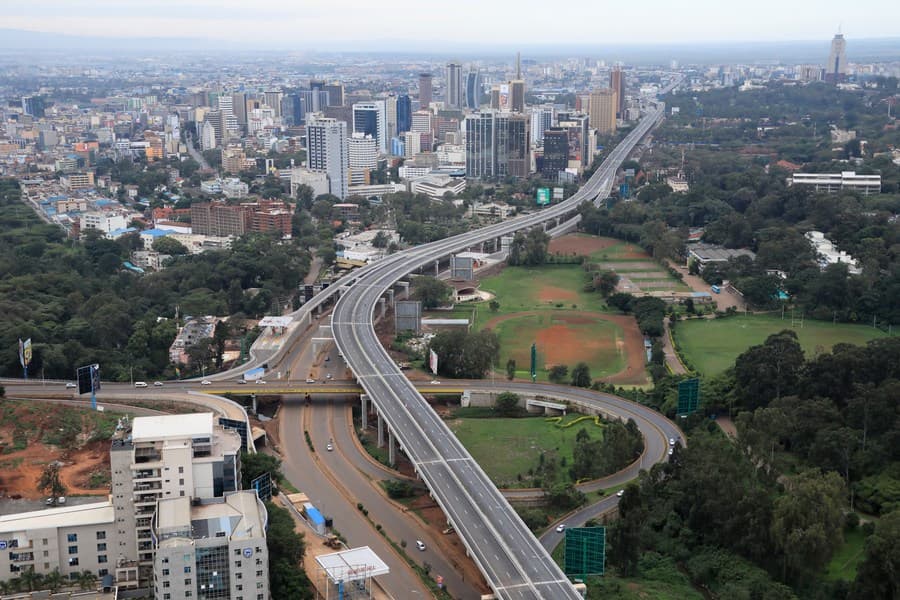We're loading the full news article for you. This includes the article content, images, author information, and related articles.
The Kenya Urban Roads Authority has initiated the construction of an AI-powered traffic management system across 25 key junctions, aiming to slash the city's crippling congestion that costs the economy billions annually.

The Kenya Urban Roads Authority (KURA) has commenced the initial phase of the Nairobi Intelligent Transport System (ITS) Establishment and Junction Improvement Project, an ambitious KSh 7.9 billion initiative designed to alleviate the city's chronic traffic congestion. The project, approved by President William Ruto's cabinet in February 2024, will deploy artificial intelligence, smart cameras, and automated traffic signals to streamline vehicle flow and reduce reliance on manual traffic control. The construction, which began in April 2025, is led by the South Korean firm Samsung Construction and Trading Corporation and is slated for completion by February 2027.
The first phase targets 25 of Nairobi's most congested intersections, including critical junctions such as Moi Avenue/Kenyatta Avenue, Mbagathi Way/Lang'ata Road, and Limuru Road/Muthaiga Road. This initial stage is part of a larger plan that will eventually see 125 junctions integrated into the smart system. The project is financed through a loan from the Economic Development Cooperation Fund via the Export-Import Bank of Korea.
At the heart of the new system is a state-of-the-art Traffic Management Centre (TMC) being constructed at City Cabanas on Mombasa Road. This central hub will house engineers, police, and data specialists who will monitor real-time traffic data from a network of intersection surveillance cameras, vehicle detectors, and automated signals. The system's AI will analyze traffic patterns to optimize signal timing, giving priority to more congested routes and minimizing unnecessary stops. According to KURA Director General Silas Kinoti, this will significantly reduce waiting times at junctions.
Nairobi's traffic jams are a severe drain on the national economy. Estimates on the annual cost of lost productivity, wasted fuel, and pollution vary, with some reports citing figures as high as KSh 120 billion. Commuters in the city can spend several hours in traffic daily for relatively short journeys. A 10-kilometer commute in Nairobi can take an average of 1 hour and 18 minutes, nearly double the time for the same distance in London. The ITS project aims to directly address these economic and social costs by creating a more efficient and predictable urban road network.
Beyond traffic flow management, the ITS will also feature a robust vehicle enforcement system. The network of cameras will automatically detect traffic violations such as speeding, running red lights, and illegal lane changes. This automated enforcement is expected to improve driver discipline and road safety, while also reducing opportunities for corruption by minimizing human intervention. The system will also include traffic guidance and flow collection systems to provide motorists with real-time information.
This project represents Kenya's most significant investment in advanced traffic management technology to date, following smaller, successful pilot programs. KURA, in partnership with Huawei, previously implemented a trial ITS on the Western Ringroad from Yaya Centre to Waiyaki Way, which demonstrated the system's effectiveness. Upon the successful completion of the first phase, KURA plans to expand the system to an additional 81 intersections in a subsequent phase. Speaking at a contract signing ceremony, Roads and Transport Cabinet Secretary Davis Chirchir emphasized the need for precision and long-term viability, stating, “The system you install should allow for smooth feed-in to future technology and additions.”
While previous attempts to overhaul Nairobi's traffic management have faced challenges, including a failed 2015 plan to replace major roundabouts, the comprehensive, technology-driven approach of the new ITS offers renewed hope for residents and businesses long frustrated by the city's gridlock. The project's success will be a critical test for urban planning and infrastructure development in Kenya and the wider East Africa region.
Keep the conversation in one place—threads here stay linked to the story and in the forums.
Other hot threads
E-sports and Gaming Community in Kenya
Active 6 months ago
Popular Recreational Activities Across Counties
Active 6 months ago
The Role of Technology in Modern Agriculture (AgriTech)
Active 6 months ago
Investing in Youth Sports Development Programs
Active 6 months ago